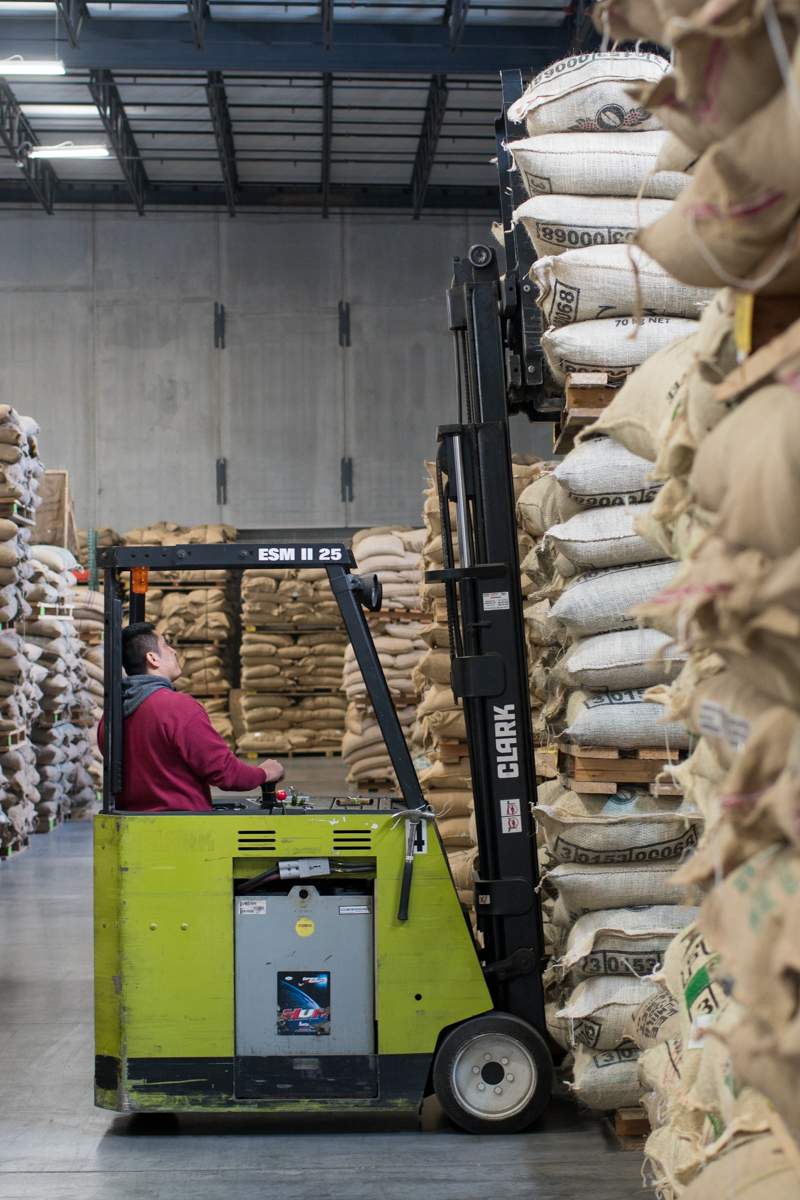
Fresh is good – freshly baked bread or freshly roasted coffee.
Fast can be good, too. Coffee hanging out in port towns like Dar, Tanzania, when it’s 99ᵒF (37ᵒC) and 99% humidity for extended periods is not ideal. In coffee, though, fresh and fast together aren’t always good. There is a strange race nowadays for new crop coffees where offerings may arrive before they should even be shipped.
For example, we saw some Kenyan offerings arriving last November and December. We were scratching our heads, confused because we hadn’t even cupped offers yet. It wasn’t until January and February that the highest-elevation and best-tasting lots arrived in the cupping labs in Nairobi. Our African green buyer, Claudia, lived in Kenya throughout the three-month harvest and cupping season. She confirmed that December was simply too early to find the season’s top selections. Another example from just this past weekend (I’m writing this in late August) – I saw someone talking about their Rwandans arriving at a warehouse in the States. Shipping out of Rwanda and Burundi is not always the easiest. These land-locked coffee-growing countries are notorious for shipment delays, but this would be the earliest arrival I’ve seen in my career. This recent race for fresh crop makes me wonder if we’re missing something. Cafe Imports wants to constantly improve, so I asked one of our longest-standing Rwandan partners (since 2006) how coffee could possibly arrive in August.

As competition for the best coffees increases, roasters seem to think, “Buy early to get the best,” but they could be jumping the gun. First isn’t always best, as higher-altitude coffees mature slowly and are harvested later. After drying, the coffee must rest to accurately express its sensorial characteristics in the cup. Anecdotally speaking, 30-90 days in parchment seems ideal. It’s important to consider that after working for eight or more months on a crop, farmers would like to get paid. There is a time pressure to ship before 60-90 days, but for the most part, 30 days resting in parchment seems to be the norm for top lots.
What are the factors leading to premature buys? Are customers asking for the new crop coffees in the cafes? Is it anxiety or FOMO? Why would an importer ship early? To appease the demand for the “freshest”? As a sales strategy? Whatever the factors, being first to market can result in significantly inferior cups.
There’s a sweet spot in the coffee buying timeframe, and finding it is challenging. One doesn’t want to miss out on the top lots by cupping too late or early, and there’s a small period in which a country’s shipping is efficient. This is why relationships with strong partners working in coffee-producing countries are critical for effective sourcing. Once a farmer or exporter is calibrated to you, your team, and the quality you are looking for, there should be constant communication leading up to the arrival of the best coffees in their lab for your selection. We rely heavily on our green buyers being on the ground and in contact with our partners, available to make decisions within that sweet spot timing.
Let’s say a roaster is at a cupping table, evaluating coffees that are two months too fresh. The average score across the table is 84 points, with a +/- 1.5-point variance due to sample roasting and roaster preference. A roaster would perceive a range of 82.5-85.5 points across the table, buy the 85+ lots, and walk away happy. The market could be a factor, too. Maybe the pricing was particularly favorable then, so they called it “good enough.” They swung early, and they’ve picked their coffee for the year. When better samples arrive in two months, they “already have their XYZ coffee.” On the new table, though, coffees are averaging 86.5, ranging from 85-88 points. Would they be disappointed in not taking that later look?


We try to wait for the highest-scoring lots, paying more for them. We believe this means that you, our customers, are truly seeing the best of what that country has to offer that season.
Will we ship a half-box of Kenyans earlier next year to compete with the fast shipment? Maybe (probably not). I do hope, though, that roasters work with a trusted importer or exporter, discussing the crop, timing, and quality, alleviating the anxiety to swing early.
When the timing is right, a fast shipment is the best because less time at port or on the water is less time in unknown conditions. Logistics is definitely one of Cafe Imports’ strengths, but just as you’d not want to pick an apple from the tree before it is ripe, sometimes you must let time and nature take their course in coffee. What makes for the “best” selection? For us, it is not necessarily the fastest or freshest. It’s about cupping and buying when the time is right, maximizing the quality of offerings on the table, and the price paid to the producer.